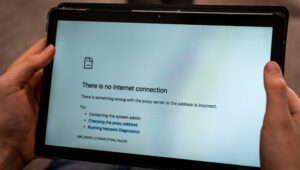

If you think cybercriminals only target big corporations, think again.
In 2025, small businesses remain one of the top targets for hackers because they often lack the time, tools, or expertise to defend themselves. A single phishing email, weak password, or outdated laptop can open the door to major data loss, downtime, and financial damage.
The good news is that a few smart, affordable steps can dramatically lower your risk.
1. Train Your Team to Spot Threats
Most breaches start with human error when someone clicks a fake invoice, logs into a spoofed website, or downloads malware by mistake.
➡️ Send regular email reminders about new scams and security tips, and mention cybersecurity awareness in team or company meetings to keep it top of mind.
➡️ Remind everyone: when in doubt, don’t click … ask IT first.
Free cybersecurity awareness resources:
KnowBe4 Free Training Kits — downloadable awareness kits, posters, and short training videos
Cyber Readiness Institute Program — free, structured cybersecurity training designed for small businesses
Global Cyber Alliance Small Business Courses — short, self-paced lessons built for small teams
NIST Small Business Cybersecurity Corner — official guides, checklists, and templates for small business owners
CISA YouTube Channel — quick videos and phishing-prevention tips from the U.S. Cybersecurity and Infrastructure Security Agency
2. Use Strong Passwords and MFA Everywhere
Weak or reused passwords are a hacker’s dream. Every account, whether it’s email, payroll, Wi-Fi, or cloud storage, should use complex, unique passwords (a password manager helps) and Multi-Factor Authentication (MFA) for a second layer of protection. This single step blocks the majority of credential-based attacks.
3. Keep Systems and Software Updated
Outdated software leaves open doors.
Turn on automatic updates for Windows, macOS, routers, and firewalls. Keep antivirus and endpoint protection active and current. If you use business apps or smart devices, make sure firmware updates aren’t being skipped.
4. Back Up Your Data Using the 3-2-1 Rule
Whether it’s ransomware or hardware failure, a solid backup plan is your safety net. The trusted 3-2-1 backup rule still holds strong: keep three copies of your data, on two different types of storage, with one copy stored off-site or in the cloud.
Example:
• Your live files on your main system
• A local backup on an external drive or NAS
• A cloud or off-site copy
For extra protection, consider adding an immutable or air-gapped copy to guard against ransomware.
5. Secure Your Wi-Fi and Network
Change default router passwords, use modern encryption like WPA3 if available, and separate guest Wi-Fi from your business systems.
Even if most of your apps and storage are in the cloud, endpoint security still matters. Make sure all laptops and mobile devices use secure connections and stay updated with antivirus protection.
Final Thoughts
Cybersecurity doesn’t have to be complicated or expensive. It just needs to be consistent.
A few smart habits, the right tools, and regular check-ups from your IT support team can protect your data, your reputation, and your bottom line.
If you’re not sure where to start, our team can help assess your risks and set up practical protections that make sense for your business.










